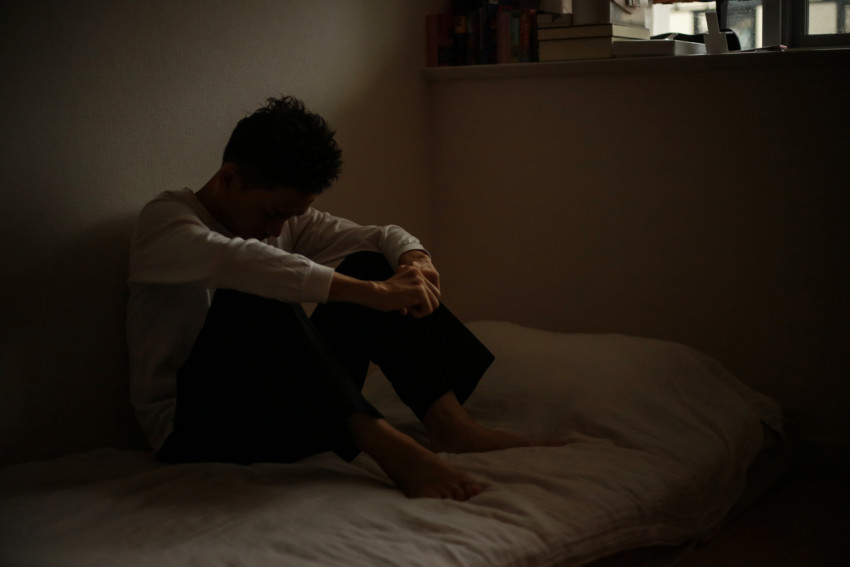“Makoto Sakamoto” (names in quote marks are pseudonyms) hung himself 10 years ago. Life had lost all meaning. A barber by trade, his barbershop was failing. His wife was unfaithful. He was 46. He came home one night “exhausted,” he tells Spa (Feb 4). “Exhaustion – that’s the last thing I remember.”
He was found and cut down in time. Life went on. He and his wife drifted farther apart. They divorced. The two children went their ways. Sakamoto moved into a cheerless one-room apartment. He gave up the shop and now works for another barber. “I live,” he says, “just to die.”
Spa’s theme is one that gets too little attention: what awaits those who survive suicide? Resurrection? Living death? Something in between?
Suicide is rising again in Japan. It peaked in 2003 at just under 35,000, then fell steadily, to 20,830 in 2021, when COVID-19 triggered a reverse. The pandemic abated. Suicide didn’t. Its most shocking feature lately is its rise among schoolchildren.
But we are dealing here with attempted suicide. “A lot of people feel that ours is a most unhappy society. They feel they don’t want to live,” says Takeshi Yoro – doctor, author, essayist, philosopher and distinguished amateur entomologist. Might his age – 87 – and the range of his activities exempt him from suspicion of any such feeling?
“Kasumi Yamagawa,” now 21, at 17 flung herself out the window of her family’s sixth-floor apartment. We must pause here to imagine -- in a girl still a child -- pain and suffering so appalling as to overwhelm the instinctive terror and revulsion, invincible one would suppose, that surge forth at the mere thought of such a thing. Her alcoholic father beat her and raped her. Was this life, what she was going through? If so, no more of it. But life had other ideas. She woke up in hospital, not knowing how she got there, thinking, “I couldn’t even die.” Well, she’d recover her strength and try again. At 19 she heard of a South Korean celebrity who died by carbon monoxide poisoning. Online research yielded the necessary information and equipment, and… a friend, alarmed by Kasumi’s online posts, rushed to the scene and saved her. The turmoil of her thoughts and feelings on this second awakening are beyond conception. Psychiatric treatment followed.
Was she “insane,” or was society? Either way, what is a person to do? Her first attempt left her with a battered body, her second with impaired speech. She lives now in a group home for people with disabilities, determined, since death is out of reach, to make a life for herself. Rich in experience – though of a particularly harrowing kind – she will put it to work. She’ll study and qualify to help children in plights similar to her own.
“Satoshi Yoshino,” 31, grew up, it might almost be said, with death as an older brother. His mother was a diagnosed schizophrenic, his father absent, the grandmother with whom he lived too sour and distant to alter the current of his feelings, which ran along the lines of “I may as well be dead.” At puberty he realized he was gay and life grew more oppressive still. A job at a call center is the last thing someone teetering on the edge needs. Callers are angry and frustrated and all too apt to take it out on whoever’s on the line, letting the chips fall where they may. They fell on Satoshi, who in a fit of black despair dove head first from his fourth-floor window and… didn’t die. The vertebral damage he suffered left him instead paralyzed from the waist down. “This is not,” he muses bleakly, “what I jumped for.”
His story has as happy an ending as anyone can give it. He lives in a care facility and is rallying his spirit. He’s coming to grips with his condition. There’s nowhere to go but up, and up he will go. “My dream,” he says, “is to rejoin society and live a full life.” We wish him the best.
This is life: too little for some, altogether too much for others, demanding, like gods of primeval religions, its human sacrifice. No society anywhere is without its pits of despair. Yoro, reflecting on Japan’s “unhappiness,” stresses modern life’s remoteness from nature, unique to our time and possibly especially evident in Japan. “Just hanging around in a park, doing nothing, being among birds, trees, flowers – it has no meaning but we need it,” he tells Spa. “But in this ‘cerebral’ society of ours everything has to mean something, everything has to be expressible in words” – or digits, he might have added. There’s no room in this artificial world of ours, he laments, for the intangible, the inexpressible.” No room, in short, for life.
Editor: If you or someone you know in Japan are having suicidal thoughts, help is available. Click here for more info.
© Japan Today















3 Comments
Login to comment
Daniel Neagari
Well... that happens. I tried 3 times that shoudl have been effective... but it didn't.
My last attempt was like 16 years ago
I stop trying eversince.... fortunately now I am only on the mornings and every 3 months at a ramdom day.
I'veSeenFootage
Well I don't know you, but I'm glad you failed and you're still here to tell us about it.
Good. Permanent solution to temporary problems, and all that.
Daniel Neagari
I don't really know if I am alright thoug... I am married now and have a family so that is something that stops it a lot.
But, as the firt person in the article said... “I live,” he says, “just to...” (apparently cannot wright that word here).
Last time I had a depression episode It got very ugly... my wife helped me alot though, but still the though of "everyone will be better off without me" was constant.
I don't know if everyone is the same, but in my case, eventhough I have hope and plans for the future... when I imagine them they are all like covered by a veil or fog... murky.
I promissed myself I won't do it again.... but that is very very far from saying "I really look forward for tomorrow"